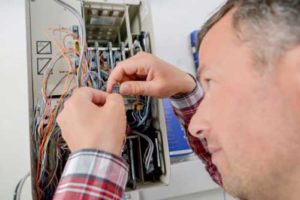Blowing A Fuse: What Homeowners Need To Know
Your home’s electricity provides convenience and helps keep your family comfortable, and maintaining your electrical system can be important for enjoying better safety and uninterrupted power. One common problem that homeowners encounter is a blown fuse. Continue reading to learn several things that your local electrician serving Frederick would want you to know about blowing a fuse.

The Basics of Electrical Fuses
Many people don’t realize that fuses are safety devices designed to help prevent electrical shocks and electrical fires. Fuses are made with conductor strips that melt and cut the electrical circuit when more amperage than they’re designed to handle runs through or an overcurrent occurs. Electrical fuses come in 2 varieties: plug and cartridge. A plug fuse resembles a light bulb, and newer models of these fuses have embedded glass that indicates if the fuse is blown or damaged. A cartridge fuse is thin and cylindrical, featuring contact points at both ends.
The Causes of Blown Fuses
While there are a number of problems that can lead to a blown fuse, one of the most common causes seen by electricians is the use of too many electric devices in one area. Often, when called for electrical repairs, electricians find that a circuit is overloaded because too many items are drawing power from a single socket. If you have noticed one fuse blowing repeatedly, then this can indicate that there are too many items plugged into sockets in the area.
The Fixes for a Blown Fuse
If you are dealing with a blown fuse, then one of the quickest ways to restore power to your items is to unplug a few of the devices. To help determine what is overloading the circuit, it can help to work backward and unplug one item at a time, starting with the most recent addition. If you have a breaker box, then move the breaker from the “off” to the “on” position. If you have a fuse box, then carefully disable and replace the fuse using dry hands and while standing on dry ground. If the fuse blows again, then contact an electrician.
